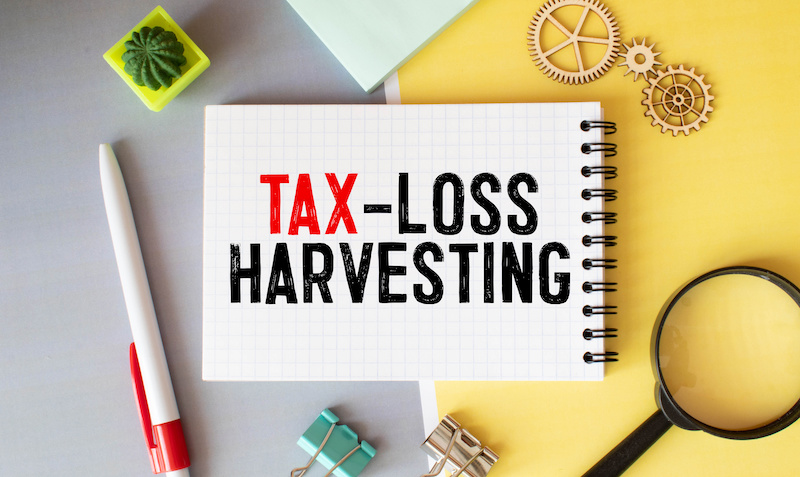Reducing Your Tax Bill with Tax Loss Harvesting
by SGL Financial

It’s safe to say that at some point in time, you may lose some money throughout your investment horizon, both short- and long-term. However, a losing investment can be a good opportunity to lower your tax liability by deploying a tax loss harvesting investment strategy. Instead of accepting your investment at a loss, utilizing this method is a tax-smart strategy all investors should consider.
The tax-loss harvesting strategy works in a fairly straightforward way. Whenever an asset or security in your portfolio is underperforming, you sell it and utilize the loss by offsetting any capital gains. You can then reinvest the money from the sale into another security or investment according to your risk profile.
The general idea of tax-loss harvesting is straightforward, although you should plan your strategy tactfully to avoid common mistakes and pitfalls.
Our advisors at SGL Financial are among the most experienced in Illinois and can answer your tax-related questions, from capital gains tax to your own tax return, and help you identify potential tax savings.
Tax-Loss Harvesting Basics
Let’s say you are reviewing your portfolio and notice some of your stocks have experienced robust growth while others have dropped considerably in value. Now, you have too much of your portfolio’s value in one sector, and you need to realign your portfolio to fit your preferred asset allocation. You then sell some of your high performing stocks to rebalance your portfolio and notice a sizable taxable gain.
This is where a sound tax-loss harvesting strategy can come in handy. Suppose you were to sell the stocks that dropped in value; in this case, you could use these capital losses or carryforwards to reduce ordinary income, and your overall tax liability will be reduced.
Pay close attention to your capital gains and losses. If your losses are larger than your gains, the remaining losses can be used to offset up to $3,000 of all your ordinary taxable income. Keep the following in mind as well:
- For residual loss amounts over $3,000, you can carry the money forward to future tax years in order to offset your income down the road.
- Tax-loss harvesting is not a good strategy for retirement accounts since you cannot deduct the losses that are generated in a tax-deferred account.
- Be aware of the restrictions on using specific losses to offset gains. For example, a long-term loss would first need to be applied to a long-term capital gain, and a short-term loss would need to be applied to a short-term capital gain. Surplus losses in one category can be applied to both types of gains.

Benefits of Tax-Loss Harvesting
A solid tax-loss harvesting strategy can help you reduce your taxable income by offsetting what you have to claim as capital gains and possibly offset up to $3,000 of ordinary income. Harvesting your investments to sell at a loss and using the loss to lower (and sometimes eliminate) any taxes that you have to pay on any gains made during the year.
You don’t need a portfolio brimming with high-value assets to benefit from a tax-loss harvesting strategy. Investors without capital gains can still use losses to decrease taxes on regular income.
Tax-Loss Harvesting Rules to Follow
Surprisingly enough, the IRS does not reference tax-loss harvesting in Publication 550, where they cover investment income and expenses. However, do not interpret this as there being no rules to govern the strategy, as there are plenty.
When you report this tax maneuver to the IRS using a Form 8949 and Schedule D (Form 1040), there are two important things to remember in order to stay in the good graces of the IRS:
- Wash sales rules are imperative to understand if you want to harvest taxes successfully. Your loss will be disallowed if, within 30 days of selling your investment (before or after), either you or your spouse invest in something identical (same mutual fund or stock) or “substantially similar” to the security you sold.
- Cost basis calculations: The price you paid for the investment fluctuated unless you purchased your whole position at a single time. Keep good records of every purchase to ensure you can present the proper cost basis to report to the IRS.
How to Utilize the Strategy Effectively
Market returns will vary throughout the years; volatility is a certainty. Volatility will create potential opportunities to harvest losses. The overall amount of potential tax savings will depend upon the market’s environment; a low-return year should yield more harvesting opportunities compared to a high-return year. However, this method will work in all types of markets, as losses are ubiquitous in all the various markets.
Here is how the strategy works:
- The strategy only applies to investments held in taxable accounts (not 401(k)’s or IRAs).
- It is not as beneficial for those in lower tax brackets. The tax-loss strategy will benefit those in higher tax brackets more, as the bigger the bracket, the larger the savings.
- Don’t sell underwhelming investments just for the tax break. Unless there is something inherently wrong with the investment which caused it to drop in value, it is likely more prudent to hold onto the investment and let time and compound interest do their work.
- Put the capital from the sale to good use, and don’t miss out on subsequent investment opportunities. Invest wisely.
Working With SGL Can Help You Achieve Your Financial Goals by Implementing a Sound Tax Strategy
Tax-loss harvesting is only one component of comprehensive wealth management and tax planning, which can be a daunting task to navigate on your own. That’s why our advisors are here to answer any and all of your tax planning questions and help you formulate a personal tax strategy that works best for you.


